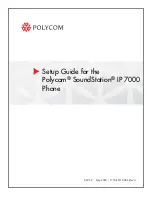
hwc_intro.fm
A31003-W1040-U101-1-7619, July 2006 DRAFT
HiPath Wireless Controller, Access Points and Convergence Software V4.0, C10/C100/C1000 User Guide
33
Overview of the Controller, Access Points and Convergence Software solution
Controller, Access Points and Convergence Software and your network
●
Offers dynamic RF management –
Automatically selects channels and adjusts Radio
Frequency (RF) signal propagation and power levels without user intervention.
3.3
Controller, Access Points and Convergence Software and your
network
This section is a summary of the components of the Controller, Access Points and
Convergence Software solution on your enterprise network. The following are described in
detail in this guide:
●
HiPath Wireless Controller
– A rack-mountable network device that provides centralized
control over all access points (both Wireless APs and third-party access points) and
manages the network assignment of wireless device clients associating through access
points.
●
Wireless AP
– A wireless LAN fit access point (IEEE 802.11) that communicates only with
a HiPath Wireless Controller.
●
RADIUS Server
(Remote Access Dial-In User Service) (RFC2865), or other
authentication server – An authentication server that assigns and manages ID and
Password protection throughout the network. Used for authentication of the wireless users
in either 802.1x or Captive Portal security modes. The RADIUS Server system can be set
up for certain standard attributes, such as filter ID, and for the Vendor Specific Attributes
(VSAs). In addition, Radius Disconnect (RFC3576) which permits dynamic adjustment of
user policy (user disconnect) is supported.
●
DHCP Server
(Dynamic Host Configuration Protocol) (RFC2131) – A server that assigns
IP addresses, gateways, and subnet masks dynamically. IP address assignment for clients
can be done by the DHCP server internal to the HiPath Wireless Controller, or by existing
servers using DHCP relay. It is also used by the Wireless APs to discover the location of
the HiPath Wireless Controller during the initial registration process. For SLP, DHCP
should have Option 78 enabled. Option 78 specifies the location of one or more SLP
Directory Agents.
●
Service Location Protocol (SLP)
(SLP RFC2608) – Client applications are User Agents
and services that are advertised by a Service Agent.
In larger installations, a Directory
Agent collects information from Service Agents and creates a central repository. The
Siemens solution relies on registering “siemens” as an SLP Service Agent.
●
Domain Name Server (DNS)
–
A server used as
an alternate mechanism (if present on
the enterprise network) for the automatic discovery process. Controller, Access Points and
Convergence Software relies on the DNS for Layer 3 deployments and for static
configuration of Wireless APs. The controller can be registered in DNS, to provide DNS
assisted AP discovery.
















































